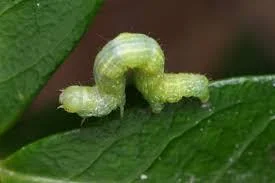NEW ENGLAND’S MOST INVASIVE INSECTS AND PLANTS
2016 is coming to an end, and we’ve learned a great deal about how we can prepare for next year. We identified our five most prevalent invasives for you to be on the lookout for. If you see any of these on your property, action should be taken quickly before causing serious damage to your trees and shrubs. As always, prevention is the best method. But we can also help you intervene after an infestation as we are certified by the University of Massachusetts in Amherst to fight weeds and pests.
The Gypsy Moth
Due to the dry weather we have been experiencing over the last two years, the Gypsy Moth has made a reappearance in full force. While caterpillars, they can cause total defoliation of a tree, which disrupts photosynthesis. If this happens over years, the tree will surely perish. The female can lay over 250 eggs in a single egg mass and the caterpillars will eat more than 200 species of trees, including maples, oaks, elms, and even white pines. With winter coming, the females have laid the eggs already and they will remain on the tree until spring. Fall tree injection is one of the best ways to ward off Gypsy Moths and other leaf-eaters. Smaller trees can also be sprayed in the Spring.
Oriental Bittersweet
Unlike other vines that grow up trees and co-exist, Oriental Bittersweet will climb up any tree, grow out over the tree and steal all the available sunlight for itself. This is referred to as “shading out” a tree and it will eventually kill it. If you see this happening to trees at the edge of your yard, try and do something early and before it has a chance to cover the tree. Bittersweet can grow to be over 60 ft long and often tries to climb trees at the edge of yards and fields where sunlight is more available. This can be treated with herbicide that goes directly on the primary root of the weed. The rest of the plant will die after the root does.
The Winter Moth
Another leaf-eater that preys on our favorites trees, the Winter Moth can cause major defoliation. These guys, however, also love to eat flower buds and will crawl into the bud before it has even broken. It will eat the flower and you will have no cherry blossoms that year. Again, treating your tree with an injection that kills anything that would bite into the tree would definitely help you or having your smaller trees sprayed in the early Spring will help protect them from major damage.
Boxwood Spider Mites
Again, with the dry weather, these seem to be making destruction everywhere we go. They create yellow stippling in the leaves that they eat from. On the underside of the leaf is often some brown dust that is their waste. Pleasant, no? Well, boxwoods can be turned rather unsightly by this pest. We know you want your boxwood to be bright and green year round. It is best to catch these mites in the warm weather as they will be out and about. Certain oils and soap sprays are effective against them.
Porcelain-Berry
Another invasive weed like Bittersweet. This Asian vine will grow in fields or at the edge of fields. With a fast growing rate of about 10 ft per year, you will find these guys out for height. While thought to be mainly along the coast, Porcelain-berry has been seen as far inland as Harvard, MA. This, along with many other weeds, can be sprayed in the wintertime before more growth can take place.





